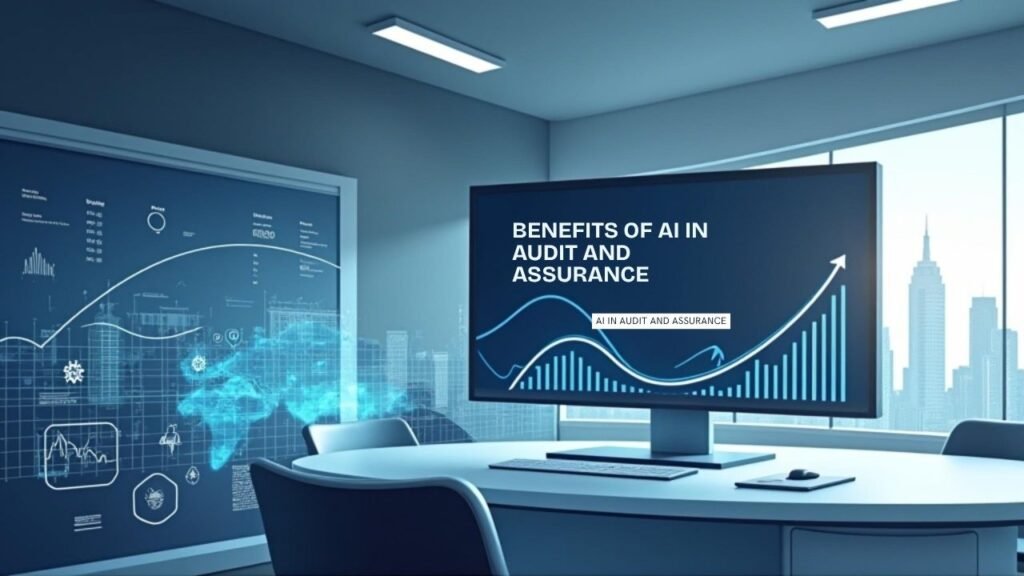Digital transformation sweeps across the globe, as the emergence of Artificial Intelligence (AI) is redefining the industries with no exception. That is why Audit and Assurance Services are also witnessing a paradigm shift.
As businesses become more data driven, traditional audit methodologies are being replaced by AI that bringing breakthroughs in levels of speed, precision and predictive insights. The days of auditors only using manual procedures and sampling are long gone. AI is making audits more thorough, intelligent, efficient, and real-time than before.
This article examines the advantages and difficulties of AI’s transformation of audit and assurance procedures as well as the prospects for this dynamic field.
The Evolution of Audit and Assurance
In the past, auditing mainly depended on human judgment, spreadsheets, and manual sampling. To evaluate the accuracy of an organization’s financial statements, auditors would test a representative subset of financial transactions and extrapolate their results. Although somewhat effective method’s scalability, accuracy, and fraud detection are limited.
The need for sophisticated audit technologies became evident as data volumes and regulatory requirements increased. With the help of artificial intelligence (AI), auditors can now process large data sets, spot irregularities, and gain deeper insights.
Key AI Technologies Transforming Audit
- Machine Learning and Predictive Analytics
A branch of artificial intelligence, called machine learning (ML), allows systems to learn from patterns in past data and classify or predict without explicit programming. ML algorithms in auditing can:
• Identify anomalous transactions
• Classify expenses more precisely
• Predict risk areas based on previous audits
By concentrating on high-risk areas, these capabilities enable auditors to change from a reactive to a proactive approach.
- Natural Language Processing (NLP)
Natural Language Processing (NLP) aids AI in comprehending and interpreting human language, which is crucial for auditing’s unstructured data like financial disclosures, emails, and contracts.
NLP enables auditors to swiftly scan large volumes of text, extract key terms, and identify red flags that could point to fraud or non-compliance.
- Robotic Process Automation (RPA)
RPA automates repetitive and rule-based tasks such as:
• Data extraction and validation
• Journal entry testing
• Bank reconciliation
By combining AI and RPA, auditors can increase overall productivity by freeing up their time for the tasks, requiring analysis and judgment.
Benefits of AI in Audit and Assurance
Using AI in audits and assurance has many benefits for both auditors and their clients.
Enhanced Accuracy
AI looks at full datasets instead of just samples, which reduces human error and makes financial statement reviews more accurate.
Improved Risk Assessment
AI-driven audits give a better picture of the risks an organization faces. They can: • Find patterns that human can’t see
• Expose hidden fraud
• Determine weak control promptly
Greater Efficiency and Speed
AI tools cut down on the time required to do audits by automating processes that take a lot of work. This allows auditors to:
• Meet audit deadlines
• Give more timely assurance
• Work with large volume clients with ease
Real-Time Auditing
With AI, it’s possible to do continuous auditing by processing data feeds in real time. This makes sure that possible problems are found right away instead of later.
Enhanced Decision-Making
AI helps clients make better strategic decisions by giving them useful data, and it lets auditors add more value by offering advisory services.

Challenges and Considerations
Even though there are many advantages of AI, there are drawbacks to incorporating AI into audit and assurance:
Security and Privacy of Data
Using AI systems to handle private and sensitive financial data raises questions regarding:
• Compliance to data protection regulations, such as the GDPR;
• Cybersecurity risks
• Ethical use of data
Workforce Adaptation and Skill Gaps
IT governance, AI modeling, and data analytics are new areas that audit professionals need to learn. To stay competitive, businesses need to fund training and reskilling initiatives.
Regulatory Compliance
For many regulators, the use of AI in audit is still relatively new. It is still crucial to make sure AI-driven audits adhere to legal frameworks and auditing standards.
The Black Box Issue
Certain AI models are difficult to understand. It may be challenging to defend choices or fulfill audit documentation requirements due to the lack of transparency.
The Auditor’s Role in the Age of AI
AI is enhancing auditors’ skills rather than taking their place. AI acts as a powerful assistant, handling repetitive tasks while auditors focus on strategic analysis and professional judgment. The future auditor will be a tech-enabled specialist who can:
• Define insights powered by AI
• Offer strategic advice
• Ensure that audit technologies are used ethically
• Deliver more value-added services
Professional organizations like the American Institute of CPAs (AICPA) and the International Auditing and Assurance Standards Board (IAASB) are revising their standards to take AI into account as the auditing landscape changes.
The Future Outlook: A New Paradigm
The combination of artificial intelligence, blockchain, and cloud computing holds the key to the future of audit and assurance. Businesses will use intelligent auditing systems that can:
• Access transactions verified by blockchain technology;
• Integrate real-time financial data
•Performing automated audit trails
Transparent, effective, and always-on assurance services that increase financial reporting’s credibility and accountability will be made possible by this.
Emerging trends to catch include:
• AI-powered fraud detection systems;
• Environmental, social, and Governance audit analytics;
• Remote auditing with AI-enabled tools.
Conclusion
AI is not just enhancing audits—it’s transforming them.
Unquestionably, artificial intelligence is changing how audit and assurance are conducted in the future. AI is assisting auditors in providing more precise, effective, and valuable services by automating repetitive procedures and facilitating real-time insights and predictive analysis. Although there are still issues with skills, transparency, and regulation, the advantages greatly exceed the risks.
Audit firms must embrace innovation, make investments in technological infrastructure, and train their employees for a digital-first future if they want to prosper in this new era. The future of assurance will be led by those who can adapt to the current transformation.



